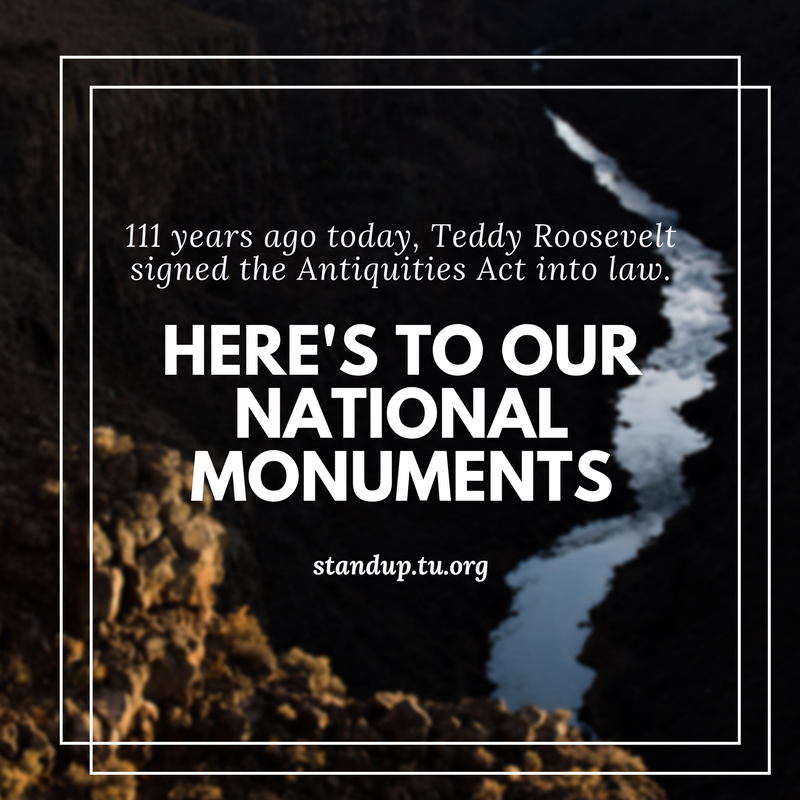Great ideas have longevity.
111 years ago today, Theodore Roosevelt signed the Antiquities Act into law, cementing the importance of our public lands heritage for decades to come. Since then, some of the most important fish and wildlife habitat in the country has been set aside for the benefit of the American people in the form of national monuments.
National monuments are a unique and special form of protection for lands that are already public. Far from a “locking up of land”, these designations protect valid existing rights for mining and energy development and often include a wide array of uses such as hunting, fishing, recreation and grazing. The Antiquities Act is an important tool for conservation because it keeps our public land like it is, preventing changes that would negatively impact our hunting and fishing heritage.
Since it’s signing, the Antiquities Act has been a bipartisan tool for conservation used by 16 presidents, half Republicans, half Democrats.
But today, that act is being called into question. The Department of Interior is in the process of reviewing national monuments designated since 1996 as required by an Executive Order issued by President Trump, and public comments are being accepted through July 10. The executive order instructs the Secretary of the Interior to provide “recommendations for such Presidential actions, legislative proposals, or other actions” and could include rescinding monuments, reducing the size of monuments, making management adjustments, or making no changes.
Join us today as we celebrate a great idea born more than a century ago. Check out our Twitter and Facebook page and then stand up for your national monuments.
Go to standup.tu.org and make your voice heard.



